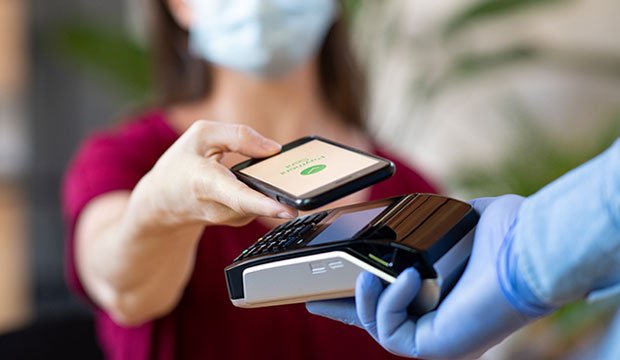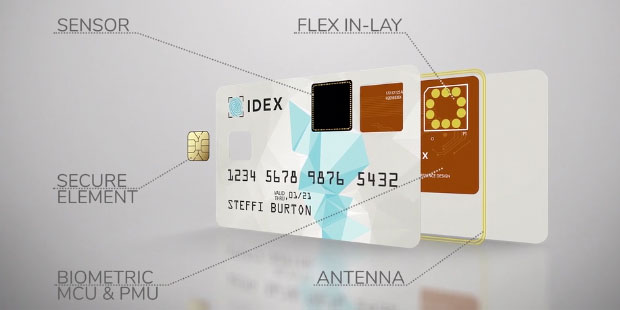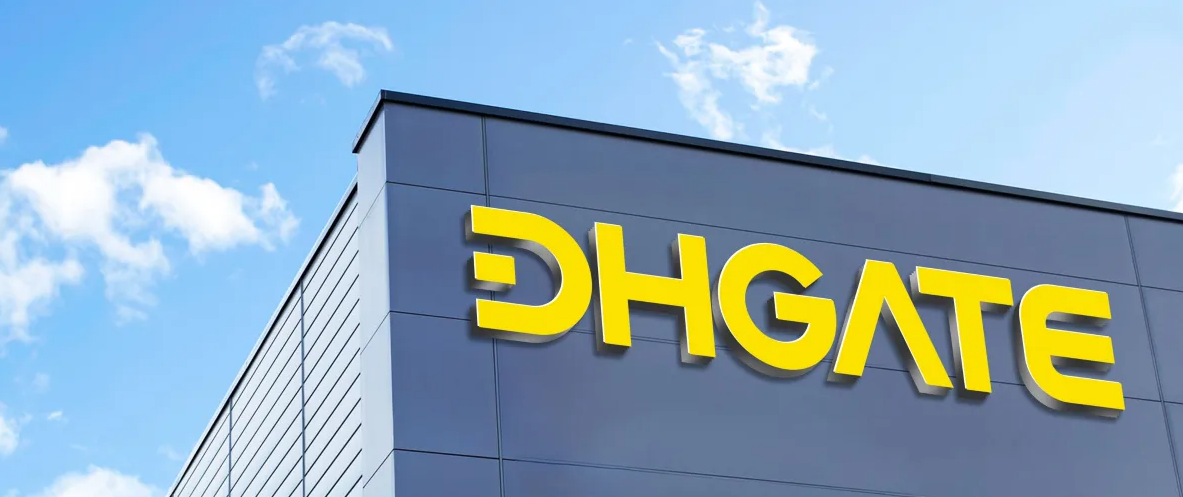
[ad_1]
With the continuing pandemic further short-circuiting the global economy, businesses and consumers are finding more convenient ways of paying their dwindling financial resources. The pandemic jump-started a shift to online buying. That, in turn, helped to accelerate the adoption of digital, contactless, and invisible payments.
This new cashless concept and the related back-end changes by banks to adopt real-time payments (RTP) are becoming increasingly popular; and have set into motion the potential for a ripple effect throughout the e-commerce ecosystem.
While it was already underway prior to the pandemic, the worldwide shift to digital payments has been accelerated by the crisis. The global digital payments market grew by nearly 24 percent in 2020 to US$4.9 trillion, according to the research data analyzed and published by Finnish financial website Sijoitusrahastot.
That report shows the global digital payments market grew by 21 percent YoY in transaction value last year. It projects that the market’s total transaction value will grow by 23.7 percent to reach $4.93 trillion. The number of users is also set to increase by 10.1 percent to reach $3.47 billion.
As a result of the growing digital payment infrastructure brought on by COVID-19, payments will continue to clear and settle fast in 2021 and become more embedded in businesses. This will make the process of initiating payments faster and easier for end customers, predicted Scott Johnson, head of product at Western Union Business Solutions.
“In the not-so-distant future, everyday Internet of Things (IoT) devices will become the new payment portal, making it possible for smart appliances and wearables to complete purchases. As technology becomes more sophisticated, and society continues to bring smart devices into their homes, these ‘invisible payments’ will become more mainstream, while physical payment methods become relics of the past,” according to Igal Rotem, CEO of smart payments provider Credorax.
Money Revolution
During the last year, consumers have had to adjust from paying with e-wallets in stores to making automatic payments through apps. Now consumers can add the experience of other payment infrastructures positioned to set a new standard, noted Vince Graziani, Boston-based CEO of IDEX Biometrics.
The growing use of contactless payments is morphing with other forms of digital payments to contribute to a radical move to a cashless economy. Another aspect to consider is the role that real-time payments bring to the overall approach to the developing digital money system.
Contactless payment refers to the backroom realities banks engage within the money payment system. It provides a secure method for consumers to purchase products or services using a debit, credit, smartcard, or another payment device. The exchange corridor involves using radio frequency identification (RFID) technology and near-field communication (NFC).
Consumers pay by tapping a payment card or other device near a point-of-sale terminal that runs contactless payment technology. This payment method is also called “tap and go.”
A related technology is working its way into the money payment fray. The impetus for this is that it’s even more hidden than the contactless payment method. The credit for this goes to the ubiquitous use of IoT devices that can become a shopper’s primary payment portal, requiring little interaction with vendors.
“Ultimately, contactless or invisible payments will culminate in the consolidation of players within the digital payments industry. This will include the decline of smaller players,” Graziani told the E-Commerce Times.
Before COVID-19 struck, nearly half of U.S. consumers were unaware of the term contactless payments. But now, the vast majority of American shoppers expect and demand touch-free payment options for a safe and secure experience, he noted.
Technology Underway
A big part of the consumer adoption process for these new payment methods are shoppers’ familiarity with biometric fingerprint technology, according to Graziani.

IDEX Biometrics fingerprint sensors and biometric solutions are used in touch-free smart cards and devices.
“Most people understand the concept of biometric fingerprint payment technology because they are used to unlocking their phones and authenticating payment apps. The technology is available now and is already embedded in our everyday lives for identity verification,” he explained.
Fingerprint biometrics will be integral to the future of digital identity. It is already priced for a mass market, he added.
The U.S. was largely viewed as lagging behind in digital payment technology. A silver lining of the COVID-19 pandemic is that overall contactless usage in the U.S. has grown 150 percent YoY as of May 2020, according to Visa. The World Health Organization encouraged societies to go cashless. So contactless and emerging technologies are garnering rapid adoption — especially in North America, noted Graziani.
According to Forbes, the U.S. mobile payment market — currently only sixth in the world — has increased 41 percent and is worth more than $98 billion.
Payment Nirvana
Some in the digital payments industry see these new biometric payment options as an all-in-one money consolidation system. This includes gadgets connected to the IoT network, which makes it possible for smart appliances and wearables to complete purchases as well.
Transactions are handled by third-party or branded mobile apps that conceal bank details. All it takes to pay is the press of a finger on a button in an app.
This process resembles a one-click purchase transaction. The difference is it happens in a physical environment where the phone becomes a one-stop checkout counter.
The driver of the adoption of this technology is directly tied to the chain of trust to expand fingerprint biometrics. This approach works for things like payments in mass transit, entrance to events like stadiums, health care records, voter identification, or access to IoT devices, Graziani explained.
He sees biometric fingerprint technology as essential for the new cashless payment industry. It is hygienic, secure, and protects individual privacy. Security is another built-in benefit.
The data for biometric fingerprints is only stored on the consumer’s payment card or app. This avoids potential abuses from cloud security holes, making it potentially hack proof.
“Eventually, I envision that biometric fingerprint technology will drive the convergence of digital identity and authentication with applications in healthcare, IT, and myriad of other industries that are dependent on digital technology,” said Graziani.
Why Banks Back RTP
The back end that runs the way banks handle the actual transfer of funds to cover digital payments is being upgraded. One solution for real-time payments seems to have the edge and is ready to go mainstream this year, according to Dimitri Dadiomov, cofounder & CEO of Modern Treasury.
“The Federal Reserve’s competing real-time payment railway, FedNow, will not deploy until 2023 or 2024. When it does, companies will have two real-time, bank-connected, choices — which should lead to increased service and competitive costs,” he told the E-Commerce Times.

This diagram illustrates a completed payment over the FedNow Service in its simplest form. The process is designed to take place within seconds.
Dadiomov sees five reasons RTP will go mainstream this year. Perhaps the most pressing reason as far as banks are concerned is it will fend off efforts by Mastercard and Visa to enable their own non-card faster payments system.
Another key reason is the pandemic has hastened the adoption of many things digital, including payments. This has created an increased expectation of immediacy.
A third reason is a need for vendors and businesses to have speedy payments to meet the pace of transactions and keep a close watch on cash. This is especially critical given pandemic pressures on many SMBs, he noted.
Fourth, real-time payments include details about the transaction along with the transaction, so books can be immediately reconciled. This process can help take the cost and hassles out of accounting.
The fifth reason for banks to support RTP is to gain the benefits of upgrading technology. Companies want to cut cost and time out of all business processes.
“The current ACH system was designed in the 1970s and is ripe for updating,” said Dadiomov.
Digital Payment Adoption
Security remains a primary concern by both vendors and consumers, noted Graziani. The onus is on financial services providers and retailers to protect consumers during the payment transaction process.
“Even small mom and pop [establishments] like ice cream stands in rural areas have moved away from cash-only businesses and have embraced digital payment options like Square,” he said.
Payment systems that require biometric authentication will eliminate existing fraud by signatures being forged, PINs being cracked, or online accounts being hacked. Fingerprints are virtually impossible to replicate.
“I fully expect that the U.S. will become a mostly cashless society within a year due to COVID, as opposed to the three-to-five-year timeline before the pandemic,” predicted Graziani.
How Biometric Security Works
Biometric fingerprint payment cards provide end-to-end encryption. This process secures the user’s card and data, according to Graziani.
A fingerprint biometric card allows users to authenticate their ID by touching their finger to the card’s sensor while holding it over the contactless card machine. Shoppers only have to hold their own cards over the PoS system.
The entire transaction process is free of public PIN pads or checkout counters. This makes it no different from how consumers currently use contactless payments cards.
“This touch-free payment technology provides the consumer with the convenience of contactless, or a mobile payment, but with far greater security, as the card is personally tied to the owner,” he explained.
[ad_2]
Source link







